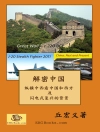Central Asia, known as the home of Tamerlane and the Silk Road, is a crossroads of great cultures and civilizations. In 1991 five nations at the heart of the region—Kazakstan, Kyrgyzstan, Tajikistan, Turkmenistan, and Uzbekistan— suddenly became independent. Today they sit strategically between Russia, China, and Iran and hold some of the world’s largest deposits of oil and natural gas. Long-suppressed ethnic identities are finding new expression in language, religion, and occasional civil conflicts.
Civil Society in Central Asia is a pathbreaking collection of essays by scholars and activists that illuminates the social and institutional forces shaping this important region’s future. An appendix provides a guide to projects being carried out by local and international groups.
Spis treści
Preface
Maps of Central Asia
Introduction
1) Civil Society in Central Asia
2) The Legal Regulation of NGOs – Central Asia at a Crossroads
3) Freedom of Association and the Question of its realization in Kazakhstan
4) Governement and Nonprofit Sector Relations in the Kyrgyz Republic
5) Enviornmental NGOs & the Development of Civil Society in Central Asia
6) Kolkhoz and Civil Society in the Independent States of Central Asia
7) Prospects for Development of an Independent Media in Kazakhstan
8) Can Uzbekistan Build Democracy and Civil Society?
9) Civil Society and Identity in Uzbekistan
10) Islam and Tajikistan’s Human and Ecological Crisis
11) Women’s NGOs in Central Asia’s Evolving Societies
12) The Real Work – Sustainig NGO Growth in Central Asia
Organizations
Online Resources
Appendices












